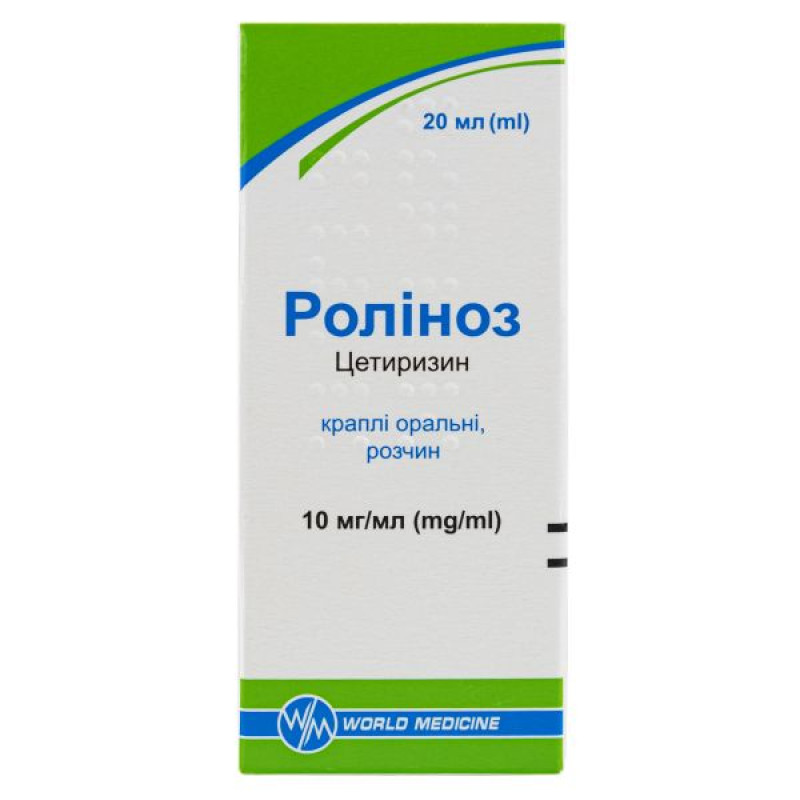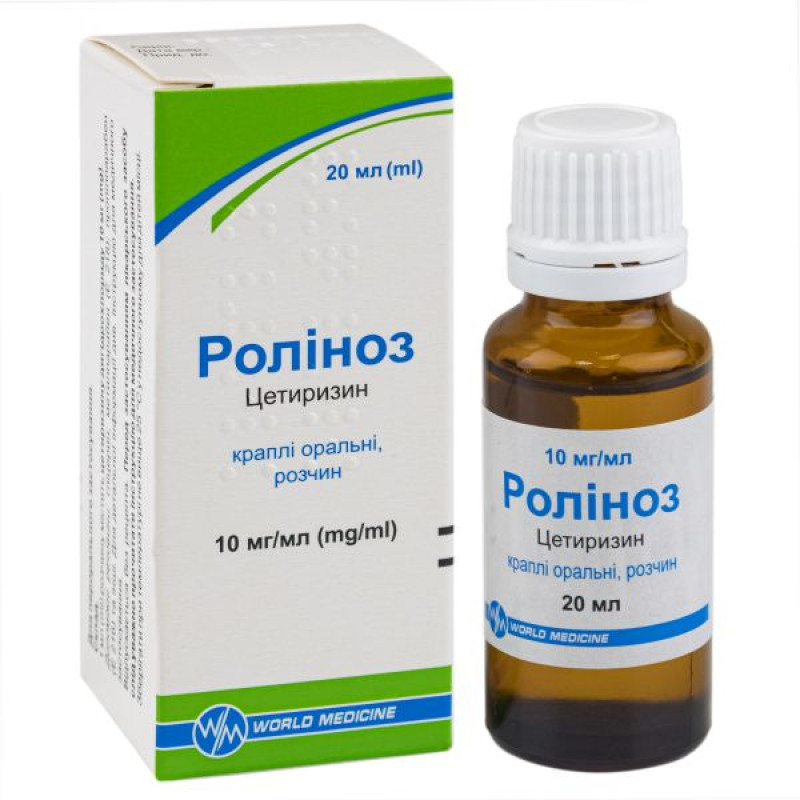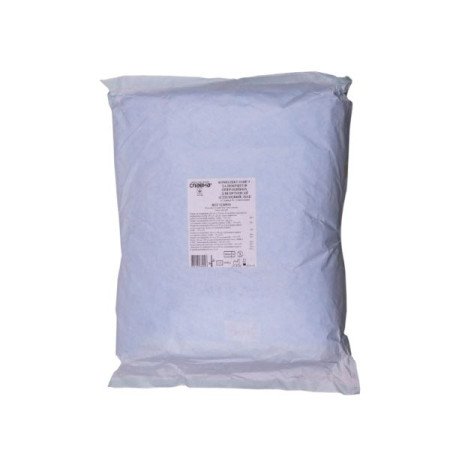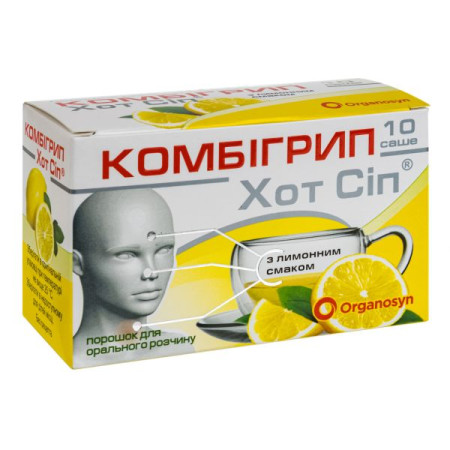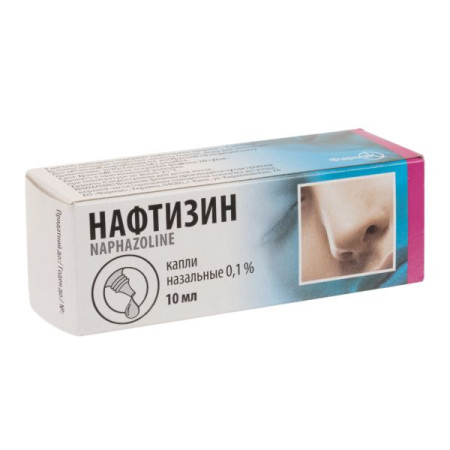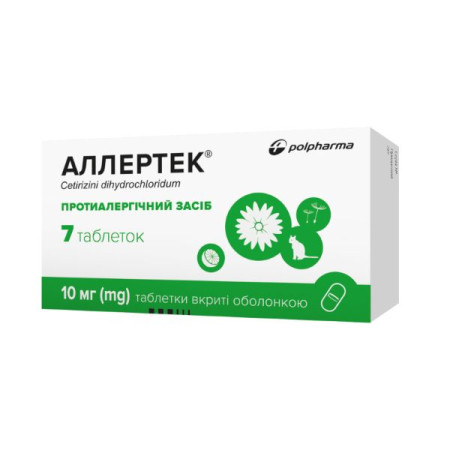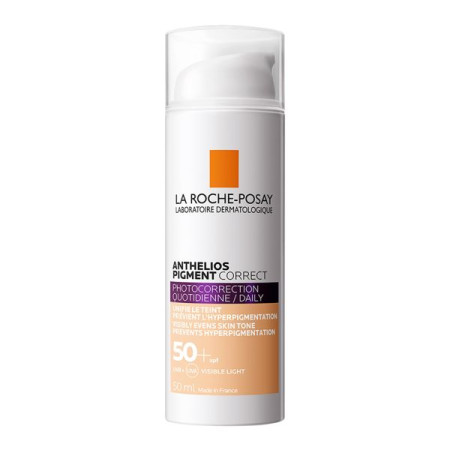Rolinoz oral drops solution 10 mg/ml bottle 20 ml
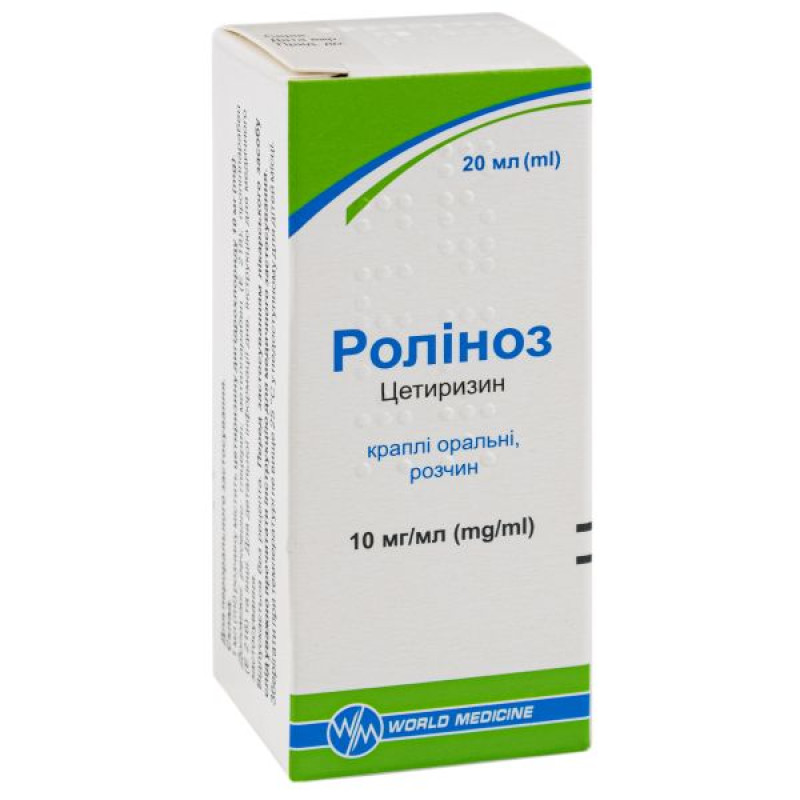
Instructions for use Rolinoz oral drops, solution 10 mg/ml, bottle 20 ml
Composition
active ingredient: cetirizine;
1 ml of solution (20 drops) contains cetirizine dihydrochloride 10 mg;
excipients: glycerin (85%); propylene glycol; sodium saccharin; methylparaben
(E 218); propylparaben (E 216); sodium acetate, trihydrate; glacial acetic acid; purified water.
Dosage form
Oral drops.
Main physicochemical properties: clear colorless liquid.
Pharmacotherapeutic group
Antihistamines for systemic use. Piperazine derivatives. ATX code R06A E07.
Pharmacological properties
Pharmacodynamics
Mechanism of action.
Cetirizine, a metabolite of hydroxyzine, is a potent, selective antagonist of peripheral H1 receptors. In in vitro receptor binding studies, no significant affinity was observed for receptors other than H1 receptors.
Pharmacodynamic effects.
In addition to its antagonistic effect on H1 receptors, cetirizine has antiallergic effects: at a dose of 10 mg 1 or 2 times a day, the drug inhibited the late phase of migration of cells involved in the inflammatory reaction (mainly eosinophils) in the skin and conjunctiva of atopy subjects who were administered antigen; at a dose of 30 mg/day, it inhibited the influx of eosinophils in bronchoalveolar fluid during the late phase of bronchoconstriction caused by inhalation of allergens in patients with bronchial asthma. In addition, cetirizine inhibited the late phase of the inflammatory reaction induced by intradermal administration of kallikrein in patients with chronic urticaria. Cetirizine also reduces the expression of adhesion molecules such as ICAM-1 and VCAM-1, which are markers of allergic inflammation.
Clinical efficacy and safety.
At doses of 5 mg and 10 mg, cetirizine potently inhibits the blistering and flushing caused by very high concentrations of histamine in the skin, although the relationship to efficacy has not been established. The onset of action after a single dose of 10 mg occurs within 20 minutes in 50% of subjects and within 1 hour in 95% of subjects. The effect lasts for at least 24 hours after a single dose.
The use of cetirizine in patients with allergic rhinitis and a comorbid condition such as bronchial asthma (mild to moderate in severity) at a dose of 10 mg once a day improved the condition of rhinitis symptoms and did not affect lung function, confirming the safety of cetirizine in patients with mild to moderate bronchial asthma.
The use of cetirizine at a high daily dose of 60 mg per day for a week did not cause statistically significant prolongation of the QT interval.
When taken at recommended doses, cetirizine improved the condition of patients with perennial and seasonal allergic rhinitis.
In children aged 5 to 12 years, tolerance to the antihistamine effect of cetirizine (suppression of wheals and flares) was not observed. If treatment with cetirizine is discontinued after repeated administration, skin reactivity to histamine is restored within 3 days.
Pharmacokinetics
Cetirizine exhibits linear kinetics at dosages from 5 mg to 60 mg.
Absorption.
The steady-state maximum concentration of cetirizine in plasma is approximately 300 ng/ml and is reached within 1 ± 0.5 hours. The distribution of pharmacokinetic parameters, such as peak plasma concentrations (Cmax) and area under the curve (AUC), is uniform. The extent of absorption of cetirizine was not reduced by concomitant administration with food, although the rate of absorption was reduced. Bioavailability is similar when cetirizine is administered as a solution, capsules or tablets.
Distribution.
The apparent volume of distribution of cetirizine is 0.5 l/kg. Binding to plasma proteins is 93 ± 0.3%. Cetirizine does not affect the binding of warfarin to blood proteins.
Metabolism.
Cetirizine does not undergo extensive first-pass metabolism.
Breeding.
Approximately 2/3 of the dose of cetirizine is excreted unchanged in the urine. The terminal half-life is approximately 10 hours. When administered at a daily dose of 10 mg for 10 days, no accumulation of cetirizine was observed.
Certain groups of patients.
Patients with impaired liver function.
In patients with chronic liver disease (hepatocellular, cholestatic and biliary cirrhosis), after taking 10 mg or 20 mg of cetirizine as a single dose, an increase in half-life by 50% and a decrease in clearance by 40% were observed compared to healthy volunteers. Dosage adjustment in patients with impaired liver function is only necessary when such patients also have impaired renal function.
The pharmacokinetics of cetirizine were similar in patients with mild renal impairment (creatinine clearance above 40 ml/min) and healthy volunteers. In patients with moderate renal impairment, a 3-fold increase in half-life and a 70% decrease in clearance were observed compared to healthy volunteers. In patients undergoing hemodialysis (creatinine clearance 7 ml/min), a 3-fold increase in half-life and a 70% decrease in clearance were observed after oral administration of 10 mg cetirizine compared to healthy volunteers. Cetirizine is poorly eliminated by hemodialysis. Patients with moderate renal impairment require adjustment of the cetirizine dosage. The drug is contraindicated in patients with severe renal impairment.
Elderly patients.
After a single oral dose of 10 mg cetirizine, the elimination half-life in these patients was increased by almost 50% and the clearance was decreased by approximately 40% compared to younger subjects. The decrease in cetirizine clearance was associated with decreased renal function.
Children.
The half-life of cetirizine was almost 6 hours in children aged 6–12 years and 5 hours in children aged 2–6 years. In children aged 6–24 months, this figure was reduced to 3.1 hours.
Indication
Symptomatic therapy of nasal and ocular symptoms of seasonal and perennial allergic rhinitis, chronic idiopathic urticaria.
Contraindication
Hypersensitivity to the active substance, other components of the drug, to hydroxyzine or to any piperazine derivatives in history; severe renal impairment with creatinine clearance less than 10 ml/min.
Interaction with other medicinal products and other types of interactions
In studies of the use of cetirizine with antipyrine, pseudoephedrine, cimetidine, ketoconazole, erythromycin, azithromycin, no pharmacokinetic interactions were observed.
With multiple administration of theophylline (400 mg once daily) and cetirizine, a slight (16%) decrease in cetirizine clearance was observed, while theophylline disposition was not increased with concomitant administration of cetirizine.
In studies of the use of cetirizine with cimetidine, glipizide, diazepam and pseudoephedrine, no adverse pharmacodynamic interactions were observed.
In studies of the use of cetirizine with antipyrine, azithromycin, erythromycin, ketoconazole, theophylline and pseudoephedrine, no adverse clinical interactions were observed. In addition, the simultaneous use of cetirizine with macrolides or ketoconazole did not lead to clinically significant changes in the ECG.
With multiple administration of ritonavir (600 mg twice daily) and cetirizine (10 mg daily), the duration of exposure to cetirizine increased by approximately 40%, while the disposition of ritonavir was slightly reduced (-11%) with concomitant cetirizine administration.
There is no evidence of an increase in the effect of sedatives when cetirizine is used in therapeutic doses. However, the use of sedatives should be avoided while taking cetirizine.
The extent of absorption of cetirizine is not reduced by food intake, although the absorption rate is reduced by 1 hour.
Concomitant use of cetirizine with alcohol or other central nervous system depressants may cause additional impairment of attention and performance, although cetirizine does not potentiate the effects of alcohol (at blood alcohol levels of 0.5 g/l).
Application features
Antihistamines, including cetirizine, suppress the response to skin allergy testing, so before conducting it, the drug should be discontinued 3 days before the study (withdrawal period).
Pruritus and/or urticaria have been reported to occur after discontinuation of cetirizine, even when these symptoms were not previously observed. In some cases, they may be severe enough to require re-introduction of cetirizine. The need for re-introduction of treatment depends on the symptoms that occur.
No clinically significant interactions with alcohol have been observed when cetirizine is used in therapeutic doses (at blood alcohol levels of 0.5 g/l). However, caution should be exercised in case of concomitant use.
The drug should be used with caution in patients prone to urinary retention (spinal injury, prostatic hyperplasia), with epilepsy, at risk of seizures, with chronic renal failure (dosage regimen adjustment required) and in elderly patients with renal failure (possible reduction in glomerular filtration).
Ability to influence reaction speed when driving vehicles or other mechanisms
Objective assessment of driving ability, sleep latency, and assembly line performance did not show a clinically significant effect of cetirizine at the recommended dose of 10 mg.
Patients who drive vehicles or operate machinery should not exceed recommended doses and should take into account their own body's response to the drug.
Patients who experience drowsiness should refrain from driving or operating machinery.
In sensitive patients, simultaneous administration of the drug with other agents that depress the central nervous system may cause additional deterioration in attention.
Use during pregnancy or breastfeeding
Pregnancy period.
Clinical data on the use of cetirizine in pregnant women are very limited. Animal studies do not indicate direct or indirect harmful effects with respect to pregnancy, embryonal/foetal development, parturition or postnatal development. During pregnancy, the drug should be used with caution when, in the opinion of the physician, the benefit to the woman outweighs the potential risk to the fetus.
Breastfeeding period.
Cetirizine passes into breast milk in concentrations that are 25-90% of those in blood plasma, depending on the time after administration. The drug should be used with caution during breastfeeding.
Fertility.
Available data on the effect on human fertility are limited, but no adverse effects on fertility have been identified.
Animal studies have not shown any adverse effects on fertility.
Method of administration and doses
The drug is intended for oral use.
Adults and children aged 12 and over.
The drug should be used at a dose of 10 mg (20 drops) once a day.
Children aged 6 to 12 years.
The drug should be used in a dose of 5 mg (10 drops) 2 times a day.
Children aged 2 to 6 years.
The drug should be used at a dose of 2.5 mg (5 drops) 2 times a day.
For children with impaired renal function, the dosage should be adjusted individually, depending on the patient's creatinine clearance, age, and body weight.
Elderly patients.
Provided that renal function is normal, there is no need to adjust the dosage for such patients.
Patients with impaired liver function.
There is no need to adjust the dosage for such patients.
Patients with impaired renal function.
There is no documented efficacy/safety data in patients with renal impairment. Since cetirizine is primarily excreted by the kidneys, if no alternative treatment is available, the dosage should be individualized based on the renal function status. The table below should be consulted and the dose adjusted accordingly.
| Kidney function status | Creatinine clearance (ml/min) | Dosage and frequency |
| Normal function | ≥ 80 | 10 mg once daily |
| Mild degree of disturbance | 50–79 | 10 mg once daily |
| Moderate degree of disturbance | 30–49 | 5 mg once daily |
| Severe degree of violation | < 30 | 5 mg once every 2 days |
| End-stage renal failure – patients undergoing dialysis | < 10 | Contraindicated |
The drug should be dripped into a spoon or dissolved in water and taken orally. If dilution is used, it should be taken into account, especially when used in children, that the volume of water to which the drops are added should correspond to the amount of liquid that the patient can swallow. The diluted solution should be taken immediately.
Children
The drug should be used in children over 2 years of age.
Overdose
Symptoms.
Symptoms observed after significant overdose of cetirizine are mainly related to effects on the central nervous system or to effects that may indicate anticholinergic activity. Adverse reactions reported after doses exceeding at least 5 times the recommended daily dose include: confusion, diarrhea, dizziness, fatigue, headache, malaise, mydriasis, pruritus, restlessness, sedation, drowsiness, stupor, tachycardia, tremor, urinary retention.
Treatment.
In case of overdose, symptomatic and supportive therapy should be carried out. Gastric lavage may be performed. Dialysis is not an effective method for removing cetirizine. A specific antidote for cetirizine is unknown.
Adverse reactions
Cetirizine is known to have minor central nervous system side effects at recommended doses, including drowsiness, fatigue, dizziness and headache. Paradoxical central nervous system stimulation has been reported in some cases.
Methylparaben and propylparaben, which are part of the drug, can cause allergic reactions that may not appear immediately.
Although cetirizine is a selective antagonist of peripheral H1 receptors and has almost no anticholinergic effect, isolated cases of difficulty urinating, impaired eye accommodation, and dry mouth have been reported.
The following adverse reactions have been reported in studies of cetirizine in at least 1% of patients:
on the part of the psyche - drowsiness;
from the nervous system – dizziness, headache;
from the respiratory system, chest organs and mediastinum – pharyngitis;
from the digestive tract - abdominal pain, dry mouth, nausea;
general disorders – increased fatigue.
The following adverse reactions have been reported in at least 1% of children aged 6 months to 12 years in studies of cetirizine:
on the part of the psyche - drowsiness;
from the respiratory system, chest organs and mediastinum – rhinitis;
from the digestive tract - diarrhea;
The following adverse reactions have also been reported with cetirizine. Adverse reactions are listed by MedDRA (Medical Dictionary of Regulatory Activities) system organ class and frequency: very common (≥ 1/10); common (≥ 1/100, < 1/10); uncommon (≥ 1/1,000, < 1/100); rare (≥ 1/10,000, < 1/1,000); very rare (< 1/10,000); not known (frequency cannot be estimated from the available data).
From the blood and lymphatic system:
very rarely - thrombocytopenia.
On the part of the immune system:
rarely - hypersensitivity reactions; very rarely - anaphylactic shock.
Metabolism and nutrition:
unknown - increased appetite.
From the psyche:
infrequently - agitation; rarely - aggressiveness, confusion, depression, hallucinations, insomnia; very rarely - tic; unknown - suicidal thoughts.
From the nervous system:
infrequently - paresthesia; rarely - convulsions; very rarely - dysgeusia, dyskinesia, dystonia, syncope, tremor; unknown - amnesia, memory impairment.
On the part of the organs of vision:
very rarely - accommodation disorders, blurred vision, involuntary movements of the eyeball.
On the part of the organs of hearing and balance:
unknown – vertigo.
From the heart:
rarely - tachycardia.
From the digestive tract:
uncommon – diarrhea.
From the hepatobiliary tract:
rarely - liver dysfunction (increased levels of transaminases, alkaline phosphatase, γ-glutamyltransferase and bilirubin).
Skin and subcutaneous tissue disorders:
infrequently - itching, rash; rarely - urticaria; very rarely - angioedema, local drug eruptions.
From the kidneys and urinary system:
very rarely - dysuria, enuresis; unknown - urinary retention.
General violations:
infrequently - asthenia, malaise; rarely - edema.
Examination:
rarely - weight gain.
Cases of intense itching and urticaria have been reported after discontinuation of cetirizine.
Expiration date
3 years.
After first opening the bottle, use the drops within 21 months.
Storage conditions
Store at a temperature not exceeding 25 °C in a dry place out of the reach of children.
Packaging
20 ml in a glass bottle with a dropper cap, 1 bottle in a cardboard box.
Vacation category
Without a prescription.
Producer
World Medicine Ilac San.Ve Tyj A.Sh., Turkey.
There are no reviews for this product.
There are no reviews for this product, be the first to leave your review.
No questions about this product, be the first and ask your question.







